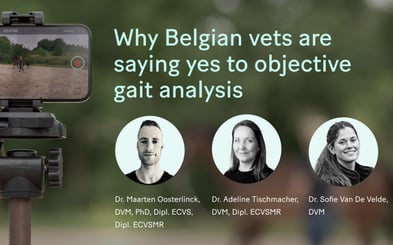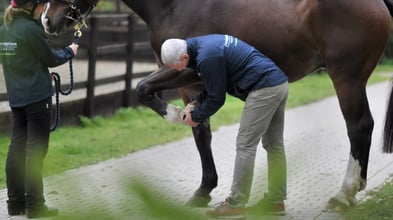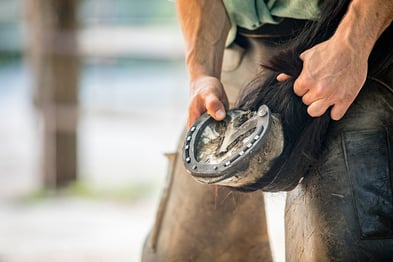Why Belgian vets are saying yes to objective gait analysis
Top Belgian equine veterinarians are clear: Objective gait analysis is becoming as essential as X-rays.

If you own or work with horses, you're likely well familiar with the issue of lameness, a change in gait or a limp due to pain. It is one of the most common symptoms of health and performance issues for horses of all ages and breeds.
Lameness is often challenging to diagnose. This is mainly due to horses cleverly adjusting their movement patterns to ease discomfort , a phenomenon known as compensatory movement asymmetries. A key tool in the veterinary toolbox for diagnosing lameness is the "law of sides". In this blog, we're going to unwrap the mystery of compensatory lameness, dive into the law of sides, and explore how gait analysis can provide solid evidence of gait irregularities.
When a horse experiences pain in a limb, its main strategy to alleviate pain is to reduce the loading of the affected limb. In horses with primary forelimb lameness, this can be observed as a head nod, an asymmetry of the head vertical movement. In horses with primary hindlimb lameness, the same strategy is used to alleviate pain, causing an asymmetry in pelvis movement.
However, in some instances, the horse may further adapt its movement to alleviate the strain caused by this primary lameness, resulting in an additional layer of compensation that we refer to as 'compensatory lameness’ .
By closely examining specific irregularities and compensatory mechanisms, we can discern whether the root cause is located in the hindlimb or forelimb. This helps veterinarians target treatments at the root of the problem and restore normal movement.

According to the principle known as the “Law of Sides, when a horse experiences lameness or pain in one of its forelimbs, it tends to compensate by redistributing weight to the diagonal hindlimb. In most horses, this often results in a push-off pelvic asymmetry on the diagonal hindlimb (2) and an impact asymmetry on the same-sided hindlimb (1). As a result, the horse's pelvis moves unevenly.
When a horse suffers from hindlimb lameness, the resulting head nod can mistakenly be read as lameness in the forelimb on the same side. (3) This head nod is the horse's attempt to reduce weight off the aching hindlimb by using the head as a counter-weight causing a clear redistribution of weight.
Objective gait analysis is a powerful tool in evaluating both primary lameness and compensatory asymmetries. It provides quantitative data and visual representation of the horse's movement, helping to identify asymmetries, abnormal gait patterns, and changes in limb loading. Analyzing gait objectively helps us differentiate between primary lameness and compensatory effects, understanding how they influence the horse's movement.
The data collected from gait analysis serves as a valuable source of information that helps veterinarians rehabilitation and treatment plans for each individual horse. This information is not only valuable on an individual basis but also provides insights at an aggregate level. By comparing different conditions and treatments, veterinarians can gain valuable knowledge about the mechanics of lameness-associated gait patterns.

Top Belgian equine veterinarians are clear: Objective gait analysis is becoming as essential as X-rays.

Giorgio Ricardi of Donnington Grove Equine Vets reveals how data-driven gait analysis enhances clinical decisions in complex lameness cases.

We sat down with UK Master Farrier Marc Jerram, who blends traditional skill with modern gait analysis to spot issues early and collaborate with vets on targeted solutions.